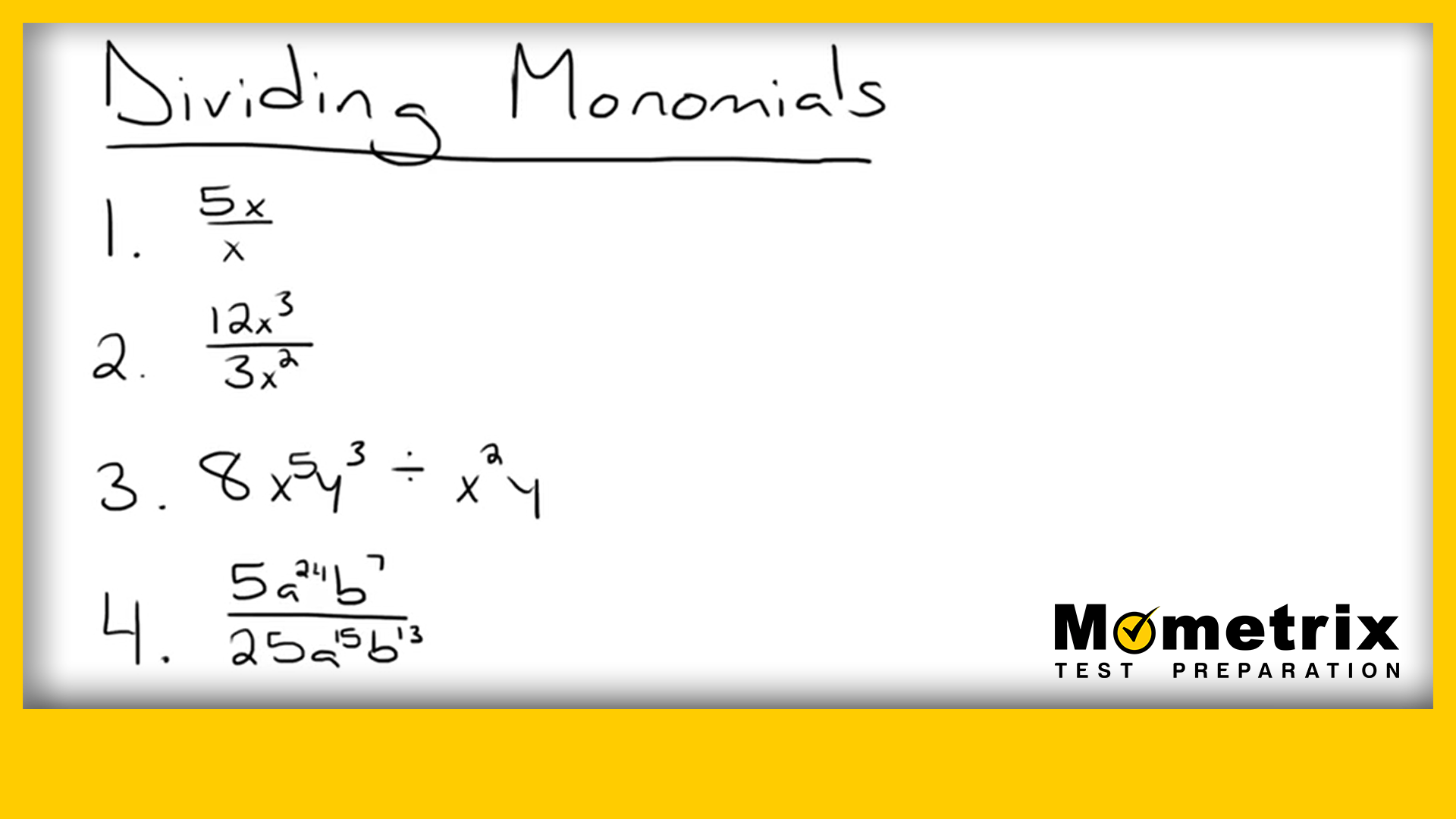
Hello, and welcome to this video on dividing monomials.
What is a Monomial?
A monomial is a mathematical expression that has only one term. \(4x\), \(xy^{3}\), and \(23a^{4}\) are all examples of monomials. So \(xy^{3}\) doesn’t quite look like this might be a monomial, but it is because \(x\) and \(y^{3}\) are multiplied together, just like 4 and \(x\) are multiplied together in \(4x\). So all three of these are examples of monomials.
Dividing Monomials
When dividing monomials, we need to remember our exponent rules, specifically the rule \(\frac{x^{m}}{x^{n}}=x^{m-n}\). This means that when bases raised to exponents are divided by one another, and the bases are the same, you keep the base the same and subtract the exponents.
Example #1
Let’s start by working through a simple example. Remember, fraction bars always represent division, so we’re dividing \(5x\) by \(x\).
When dividing monomials, start by dividing the coefficients by one another. It doesn’t look like there is a coefficient in the denominator, but remember, any variable without a coefficient has a coefficient of 1 because 1 times anything is itself. So we can divide 5 by 1.
Then, we move on to dividing our \(x\)-terms. Anything divided by itself is 1, so:
Now, to get our final answer, we multiply these two things together.
This means that \(\frac{5x}{x}=5\).
Example #2
Let’s try a slightly harder example.
So in this example we’re going to have to use that exponent rule that I talked about earlier. But first, we’re going to start by dividing our coefficients by one another, just like we did last time.
Now, divide the \(x\)-terms by one another. This is where our exponent rule will come into play. Remember our bases are the same, so all we have to do is keep the base the same and subtract the exponents.
Finally, we multiply these two things together to get our answer.
Example #3
Let’s try another one.
First, divide the coefficients by one another. Remember, the second term has a coefficient of 1.
Then, divide the \(x\)-terms. Remember, the bases have to be the same for the exponent rule to work, so we will divide the \(y\)-terms in the next step.
And now we move on to our \(y\)-terms. Remember, anything without an exponent is raised to the first power.
Finally, multiply all three parts by each other.
Example #4
Before we go, I want to try one last problem. This one is slightly more challenging.
Don’t be confused by the \(a\)’s and \(b\)’s. You can treat them just like you would \(x\)’s and \(y\)’s. First, divide the coefficients.
Then, divide the \(a\)-terms.
Next, divide the \(b\)-terms.
Remember, a negative exponent tells you to put the base raised to the positive exponent in the denominator of a fraction.
Now, multiply all three parts together.
Finally, simplify by combining this all as one fraction.
I hope this video on dividing monomials was helpful. Thanks for watching, and happy studying!

